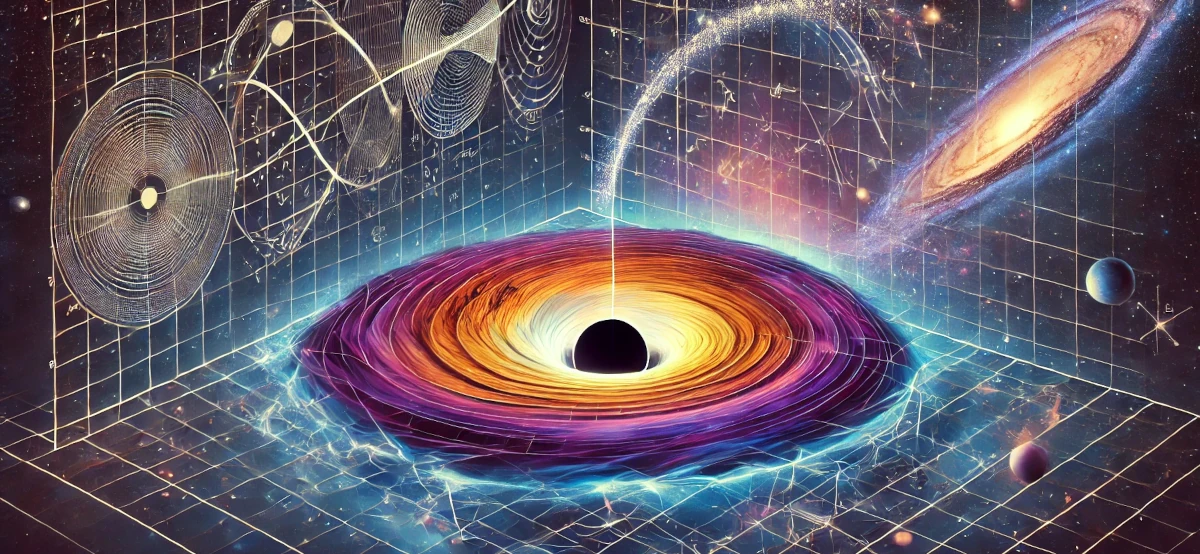Stephen Hawking’s A Brief History of Time, first published in 1988, is more than just a science book; it’s a testament to human curiosity and our relentless pursuit of understanding the universe. Hawking, despite facing immense physical challenges, embarked on a journey to explain the most complex concepts in physics to non-scientists. Written for curious readers without a scientific background, the book uses simple language and minimal mathematics to make advanced physics concepts accessible to everyone.
Key Concepts
The Expanding Universe and the Big Bang
Hawking begins by laying the foundation of modern cosmology – the expanding universe. He explains how Edwin Hubble’s 1929 discovery that distant galaxies were moving away from us at speeds proportional to their distance led to the Big Bang theory. This theory suggests that the universe originated from a single, incredibly hot and dense state approximately 13.8 billion years ago and has been expanding ever since. The evidence includes the cosmic microwave background radiation discovered in 1964, which shows a temperature of 2.7 degrees above absolute zero – exactly what scientists predicted would remain from the Big Bang.

The Nature of Space and Time
Hawking delves into Einstein’s theories of relativity, explaining how they revolutionized our understanding of space and time. He illustrates how gravity, according to general relativity, is not a force but a curvature of spacetime caused by the presence of mass and energy. “Space and time are not absolute and unchanging entities,” Hawking explains, but rather dynamic aspects of the universe, affected by the objects within it. This understanding is crucial for grasping the concepts of black holes and the early universe.
Black Holes
One of the most captivating parts of the book is Hawking’s explanation of black holes. These are regions of spacetime where gravity is so strong that nothing, not even light, can escape once it passes the event horizon. For example, a black hole with the mass of our Sun would be just 3 kilometers in diameter, yet its gravitational pull would be so intense that even light traveling at 299,792 kilometers per second couldn’t escape. Hawking’s own research led to the discovery that black holes aren’t completely black – they emit a faint radiation (now called Hawking radiation) and will eventually evaporate over incredibly long time periods. A black hole the mass of our Sun would take approximately 10^67 years to evaporate completely.
The Search for a Unified Theory
A significant portion of the book is dedicated to the quest for a “theory of everything,” a single framework that can unify all the fundamental forces of nature – gravity, electromagnetism, the strong nuclear force, and the weak nuclear force. Hawking discusses the challenges involved in reconciling Einstein’s general relativity, which describes the universe on a large scale, with quantum mechanics, which governs the subatomic world. He explores promising candidates for a unified theory, including superstring theory, which posits that fundamental particles are not point-like but tiny vibrating strings. This search for a unified theory represents the ultimate goal of physics: to understand the universe at its most fundamental level.
The Arrow of Time
Hawking addresses the intriguing concept of time’s direction through three different arrows: the thermodynamic arrow (disorder increases), the psychological arrow (we remember the past but not the future), and the cosmological arrow (the universe’s expansion). He illustrates this with a simple example: if you watch a cup falling and breaking into pieces, you can tell which way time is flowing because you never see broken pieces spontaneously jump up and form a whole cup. This happens because of entropy – the universe naturally tends toward increasing disorder, giving time its apparent direction.
Conclusion
A Brief History of Time is a remarkable attempt to explain the complex workings of the universe in a way that is both scientifically accurate and accessible to a wide audience. Hawking’s clear explanations, combined with his personal reflections on the nature of science and the human condition, make the book a compelling read. While the search for a complete understanding of the universe is still ongoing, Hawking’s work provides a valuable roadmap, inspiring generations to continue exploring the mysteries of the cosmos. His book remains relevant today, offering readers a glimpse into the grand tapestry of space, time, and the fundamental laws that govern our existence.
Did you find this content helpful?
While we strive to provide comprehensive summaries, they cannot capture every nuance and insight from the full book. For the complete experience and to support the author's work, we encourage you to read the full book.
Recommended Books
If you enjoyed A Brief History of Time by Stephen Hawking, you might also find these physics and cosmology books valuable:
- “The Elegant Universe” by Brian Greene: Picks up where Hawking leaves off, providing a deeper exploration of string theory and the quest for quantum gravity.
- “Six Easy Pieces” by Richard Feynman: Offers another accessible approach to fundamental physics concepts, complementing Hawking’s explanations with Feynman’s unique teaching style.
- “The Fabric of the Cosmos” by Brian Greene: Expands on Hawking’s space-time concepts with more recent discoveries and theories about the nature of reality.
For readers interested in big ideas and scientific thinking in other fields:
- “The Selfish Gene” by Richard Dawkins: Applies scientific thinking to biology and evolution, perfect for readers who enjoy exploring fundamental questions about life and existence.
- Thinking, Fast and Slow by Daniel Kahneman : Explores how our minds work through the lens of scientific research, appealing to readers who enjoy understanding complex systems through clear explanations.